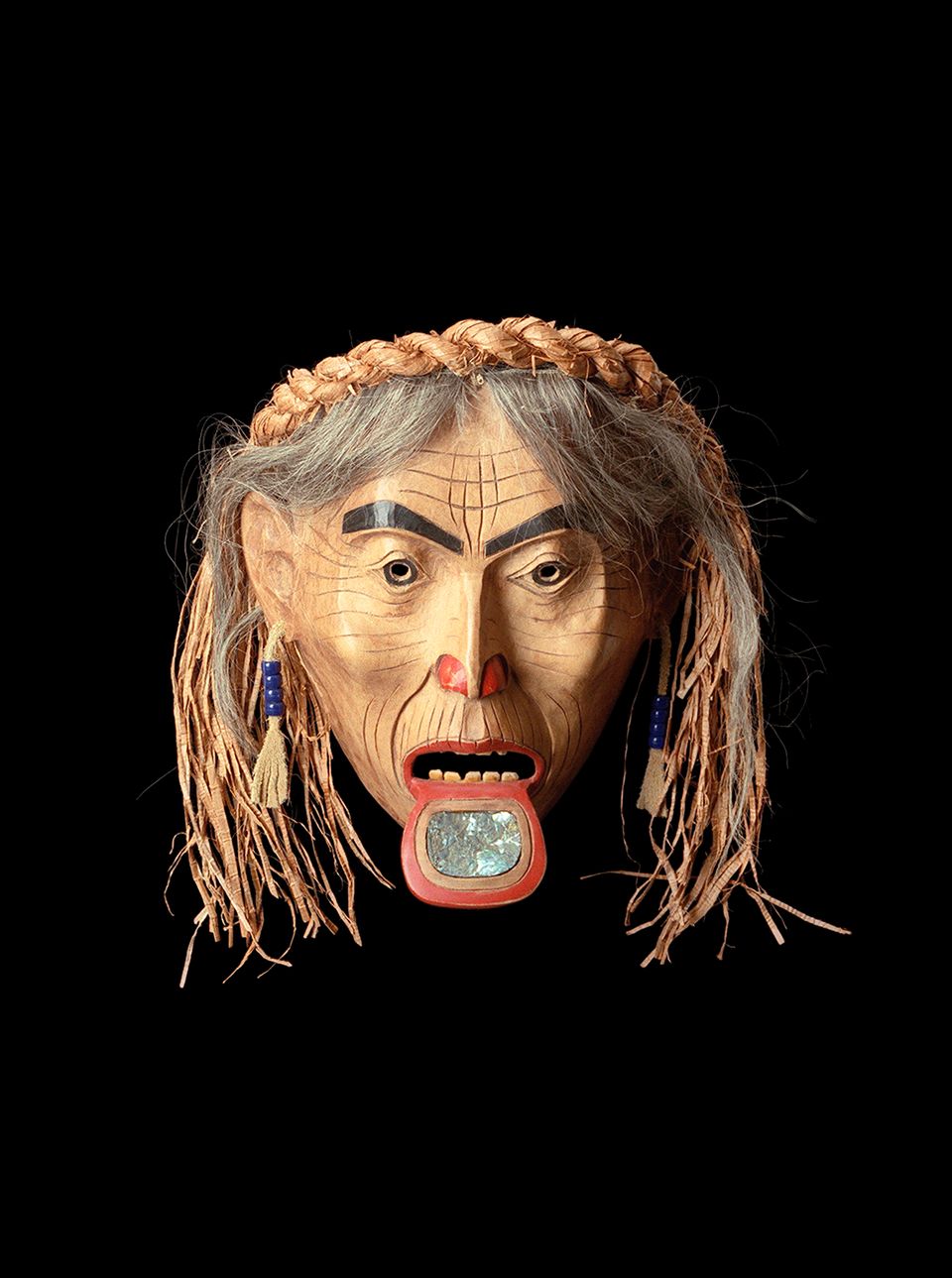
Freda Diesing (Haida), Mask, Old Woman with Labret, 1974, alderwood, paint, hair, cedar bark, abalone, glass beads, moose hide, bone or plastic, Courtesy of the Royal BC Museum, RBCM15057. Photo: Courtesy of the Royal BC Museum and Archives. © Canadian Westcoast Art
Artist’s Language
Ajii Aajii niijaanguu aa guulaa isgyaan st’iitgaa nang k’ul jaad gyaa’aandas ahl sGaanuwas isgyaan yahgudang aanaa. Freda Diesing ta k’idgee ‘laangaa, k’udlaangee ‘laangaa, isgyaan guulaa ‘la gyaandgee, ahluu nang jaadgee sGaanuwaas Freda gya hlGangulas ‘iitl’ ga kinggudaas. ‘Iihlaangee Xaadas gin k’iida sGungan, nang yaats Xaadee gin ‘waadluwaan an unsiid suudagan, gyaan sluu, nang jaadee kwaan gin k’idaa ‘leeyaa iijan, Diesing a’kaanaa ‘laak kindaagan.
English
The matriarch depicted in this mask, adorned with abalone shells and a labret (lip piercing), embodies great power and respect. Hand carved, crisply painted, and adorned with abalone, Freda Diesing’s work reveals the power of women as artists and in Northwest Coast culture and belief systems. While anthropologists and art historians have historically identified Haida carving as a male activity, Diesing defied these expectations and brought a greater awareness to the fact that women have created carvings throughout the Northwest and across time.













